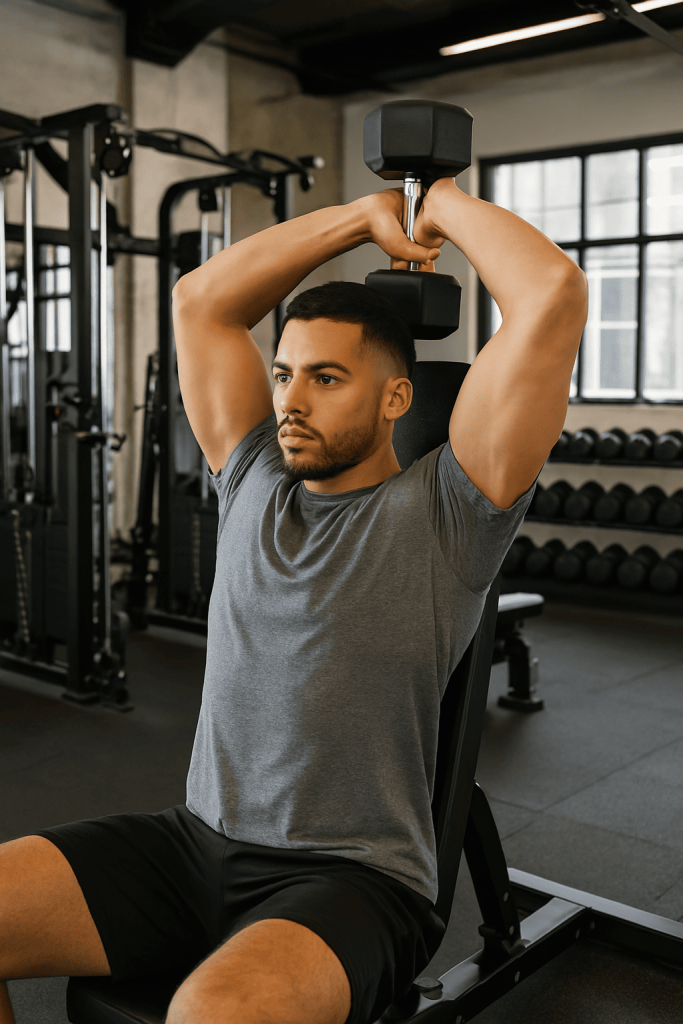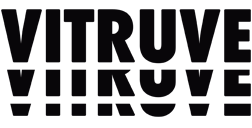15 de April de 2025
Tricep Extensions: Exercise Guide, Tips and Benefits
If your goal is to develop stronger arms and improve pressing strength, tricep extensions are one of the most effective isolation exercises you can include. This versatile movement directly targets the triceps and plays a vital role in enhancing upper body power and elbow joint health. Whether you use dumbbells, barbells, or cables, tricep extensions are a valuable addition to any Strength and Conditioning program focused on performance and injury prevention.
What Are Tricep Extensions?
Tricep extensions are an isolation exercise that specifically targets the triceps brachii—the muscle responsible for elbow extension. The movement involves extending the elbow joint against resistance, typically using a dumbbell, barbell, cable machine, or resistance band. Tricep extensions can be performed in multiple variations, including overhead, lying (also called skull crushers), and cable pushdowns.
By isolating the triceps, this exercise helps to strengthen and grow the muscle without overloading the shoulders or chest. For athletes and lifters alike, strong triceps are essential for improving performance in compound lifts like the bench press and overhead press.

How to Do Tricep Extensions Properly
Begin by selecting your preferred equipment—dumbbell, EZ bar, cable, or band. If performing the overhead variation, stand or sit upright with the weight held overhead using both hands. Keep your elbows close to your ears and your biceps beside your head.
Slowly lower the weight behind your head by bending your elbows, keeping your upper arms stationary. When your forearms reach a 90-degree angle or slightly below, reverse the motion by extending your elbows and pressing the weight back up until your arms are fully extended. Avoid flaring the elbows or using momentum; focus on controlled, strict form throughout.

Muscles Worked by Tricep Extensions
- Triceps Brachii: The primary target, this muscle consists of three heads (long, lateral, and medial) and is responsible for elbow extension.
- Anconeus: A small stabilizer muscle that assists in elbow extension.
- Shoulder Stabilizers (secondary): During overhead variations, the deltoids and scapular stabilizers contribute to arm positioning.
Proper execution isolates the triceps effectively, making this a top-tier accessory exercise for improving upper body strength and pressing capacity.
Benefits of Tricep Extensions
Tricep extensions offer a range of benefits for strength athletes, bodybuilders, and general fitness populations. By strengthening the triceps, they improve pressing power in lifts like the bench press, dips, and push-ups. Tricep development also contributes to overall upper-arm size and aesthetics.
For those involved in Strength and Conditioning, strong triceps play a key role in supporting compound pushing movements and resisting fatigue during high-volume training. Incorporating tricep extensions into your training can also help address muscle imbalances, improve joint stability, and reduce the risk of elbow-related overuse injuries.
Common Mistakes to Avoid
- Elbow Flaring: Allowing the elbows to move outward reduces tricep engagement and may stress the shoulder joint.
- Using Too Much Weight: Heavy loads often compromise form, leading to momentum and poor muscle activation.
- Partial Range of Motion: Incomplete elbow extension limits the effectiveness of the exercise.
- Lack of Core Stability: Especially during standing or overhead variations, poor bracing reduces overall control.
Variations of Tricep Extensions
- Overhead Dumbbell Tricep Extension: Great for targeting the long head of the triceps.
- Lying EZ Bar Skull Crushers: A classic variation that allows heavier loading.
- Cable Tricep Pushdowns: Maintain constant tension and offer smooth resistance.
- Single-Arm Extensions: Helps address unilateral imbalances and improves mind-muscle connection.
How to Include Tricep Extensions in Your S&C Workout
Tricep extensions are best used as an accessory lift following compound pushing movements. They can be slotted into upper body or arm-focused days, or added to push-day sessions within a periodized Strength and Conditioning plan.
For athletes using Velocity Based Training, understanding bar speed can inform fatigue management and adaptation targeting. While tricep extensions are not typically used with Velocity Based Training (VBT) devices, they support the structural integrity required for speed and power-based movements tracked by VBT encoders. A stable and strong triceps group assists in maintaining pressing mechanics during high-intensity training blocks.
FAQs About Tricep Extensions
What is the best tricep extension?
It depends on your goal, but overhead dumbbell extensions and cable rope extensions are among the most effective for full tricep engagement.
How do you do a tricep extension?
Extend your arms fully while keeping your elbows close to your head or body. Focus on a controlled motion to isolate the triceps.
How to do tricep extensions without a machine?
Use dumbbells, resistance bands, or a kettlebell. Movements like overhead or lying extensions work well with free weights.
Should you bend over for tricep extension?
For kickbacks, yes. A slight bend helps isolate the triceps. Keep your back flat and elbows fixed for proper form.
Are tricep extensions bad for elbows?
They’re safe with good form, but using too much weight or poor technique can stress the elbows. Warm up and control the range of motion.
Tricep extensions are a simple yet powerful tool for developing arm strength, supporting pressing performance, and rounding out a well-balanced training plan. They’re a go-to accessory in any Strength and Conditioning program and an essential step toward building more durable, explosive upper body mechanics.
